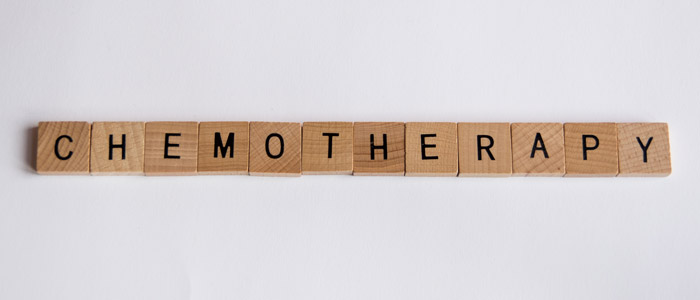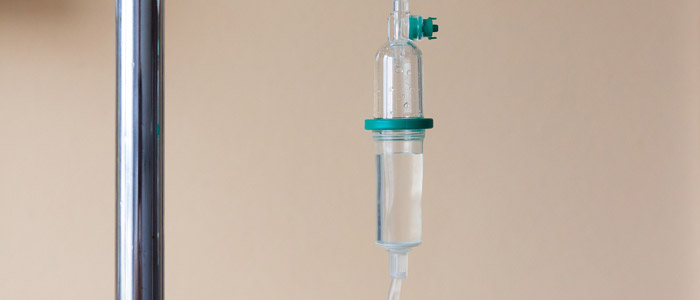By Cristina Sánchez

Cristina Sánchez is a tenured lecturer in biochemistry and molecular biology at the Complutense University in Madrid. Her research focuses on the study of the endocannabinoid system in an oncological context. The ultimate aim is to understand the anti-tumour action of cannabinoids in breast cancer in molecular terms and use it for clinical purposes. Cristina was the Scientific Secretary of the Spanish Society of Cannabinoid Research, and still sits on its governing board. She was one of the founding members of the recently formed Spanish Observatory of Medicinal Cannabis and is currently its secretary.
Increasing numbers of people are turning to cannabis in search of a complementary or alternative therapeutic option for treating their ailments. One of the questions they most often ask is whether they can use cannabis while undergoing conventional treatments.
In the case of cancer patients, the specific question is whether cannabis can be used during periods of chemo-, immuno-, hormone and radiotherapy. Unfortunately, not enough clinical trials have yet been conducted to allow for a categorical answer. In these circumstances, patients are faced with the option of waiting for the results of high-quality clinical trials (without even knowing who might be willing to conduct such research or when) or weighing up the known and potential risks and benefits and act in consequence. In this article, we shall try to summarise the information currently available, to allow patients and doctors to take the best course of action for each individual case.
Medical use of cannabis in cancer patients
Cancer patients look to cannabis with two different —but not necessarily mutually exclusive— objectives: to alleviate the side effects of the cancer therapy and to achieve antitumour responses. With regard to the first of these goals, THC has been clinically demonstrated to prevent the nausea, vomiting and loss of appetite caused by chemotherapy1. In many cases, the adverse effects are so severe as to lead patients to abandon treatment. Cannabis also has other well-established properties of great benefit to cancer patients: as an analgesic, anxiolytic and a sleep inducer1. More recently, people suffering from cancer have also turned to cannabis for its supposed antitumour effects. While it is true that certain cannabinoids have been shown to have responses of this kind in different animal models of cancer2, there are as yet no controlled clinical trials to corroborate these observations in humans. Nonetheless, due to its high safety profile, thousands of oncology patients throughout the world use cannabis to try to halt the spread of the disease or even eliminate it altogether. In either of the two cases (palliative or antitumour effects), one of the first questions patients ask is whether it is safe to combine conventional therapy (chemotherapy, immunotherapy, hormone therapy and radiotherapy) with cannabis.

What does the preclinical research suggest?
Experiments conducted in recent years on tumour cell cultures and with animal models of cancer suggest that a combination of cannabinoids and standard antitumour therapy might work better than either of the two approaches on its own. A large percentage of cancer patients receive chemotherapy. This treatment targets proliferating cells in the body, attempting to block their division and cause their death. This can be achieved by means of several general strategies. The most common is to interfere with the process of duplication of the genetic material in the cells and to block reorganisation of the cytoskeleton (the internal scaffolding which gives form to the cell, allows it to move and governs the physical separation of two daughter cells in cell division processes). The tools for blocking duplication of the DNA of the tumour cells are very varied. They include compounds incorporating alkyl groups (such as temozolomide), bridges between DNA chains (such as cisplatin), analogues of their structural components (such as 5-fluorouracil or 5-FU) and inhibitors of the machinery which maintain the topology of the DNA during the cell division process (such as irinotecan). Preclinical studies show that cannabinoids not only do not hinder the anti-tumour action of members of many of these families but actually potentiate it. For example, 5-FU reduced the viability of colorectal cancer cells in cultures far more effectively when combined with the cannabinoid agonist HU-2103. Along the same lines, Guillermo Velasco's group at the Complutense University have described how a combination of temozolomide and Δ9-tetrahydrocannabinol (THC) in an animal model of glioblastoma causes a greater inhibition of tumour growth than either of the two treatments on its own4. As for drugs that target the cytoskeleton of the dividing cells, paclitaxel has been demonstrated to have synergic effects when combined with the endocannabinoid anandamide. In a cell model of stomach cancer, a combination of the two compounds caused greater cell death through apoptosis than either of the two compounds on its own5.
As well as chemotherapy, many cancer patients receive radiotherapy treatment. This involves exposing the tumour cells to high-energy radiation to cause alterations that will halt cell division and induce their death. As in the case of chemotherapy, there is preclinical evidence to suggest that cannabinoids might sensitise tumours to this type of treatment. Scott and collaborators, for example, showed that a combination of submaximal doses (i.e. doses that exercise very discreet antitumour effects in themselves) of THC + cannabidiol (CBD) and radiation, caused a dramatic reduction in the growth of glioblastomas generated in mice6.
What the research in humans says
To date, only one clinical trial has been conducted specifically to analyse the combined effect of cannabinoids and an antitumour drug. This trial, conducted in hospitals in the UK and Germany amongst patients with recurring glioblastoma, analysed the safety and effectiveness of combining temozolomide and Sativex, a cannabinoid drug containing approximately the same amount of THC and CBD:
(https://clinicaltrials.gov/ct2/show/NCT01812616?term=sativex+temozolomide&rank=2).
Although the results of the trial have yet to be published, a press release released by the promotor (GW Pharmaceuticals) appears to indicate that there were no negative drug interactions:
Although this is the only clinical trial designed specifically to analyse the safety of combined treatments, it is important to note that many trials have been carried out with medicated cannabinoids on oncological populations following conventional antitumour treatments. For example, with Sativex alone, seven clinical trials have so far been carried out to analyse its effect on oncological pain among cancer patients. None of the subjects reported negative interactions between the medications. Likewise, no negative effects have been detected associated with the combination of drugs in other tests performed to analyse the analgesic effect of cannabinoid drugs in cases of neuropathic pain caused by the chemotherapy itself. Finally, and no less importantly, it is important to remember that one of the very few authorised medical uses of cannabinoid drugs is for the treatment of nausea and vomiting caused by chemotherapy. In principle, at least, this suggests that the combination of the two therapeutic strategies should not cause any problem.
Precautions
While it is true that the accumulated preclinical and clinical evidence to date suggests that cannabis may be used safely in combination with chemotherapy and radiotherapy, there are a number of issues that still need to be examined in greater detail. One of them is the possible interference of cannabinoids —especially CBD— with the cytochrome p450 (CYP) detoxification system. This system is responsible for metabolising many different compounds (including many of the drugs we habitually take), oxidising them and thus transforming them into metabolites which are non-toxic for the body. It has been described that both THC and, in particular, CBD are capable of inhibiting certain CYP isoforms7, which might increase the half-life of the treatments processed by these enzymes, as a result of the non-metabolisation of the drugs. Other compounds used by these patients, such as tamoxifen, are administered in the form of prodrugs, which only activate when processed by CYP. Thus the combination of these prodrugs with cannabinoids could, in principle, reduce the bioavailability of the corresponding active forms. Finally, many of the drugs used by cancer patients (antitumour drugs, anti-depressants, stomach protectors, analgesics, etc.) inhibit the CYP system, which is also responsible for detoxifying both THC and CBD, and therefore the simultaneous use of cannabis and those drugs would increase the half-life of the cannabinoids. However, none of these potential interactions appears significant enough to advise against the combined use of cannabis and other therapies. Firstly, the inhibition of CYP in vitro by THC and CBD occurs at very high concentrations, above the maximums observed in clinical trials. Secondly, the as-yet scanty clinical experience suggests that such interactions can easily be managed by making small alterations to the dosage. For example, a potentially negative interaction has been described between CBD and clobazam (Onfi), a benzodiazepine that is used as a coadjuvant in forms of epilepsy that do not respond to conventional treatments. The combined use of the two drugs was associated with greater levels of clobazam in plasma and an increase in its side effects (following a typical pattern of excess dose). These were easily reduced by lowering the dose of this compound8. It is therefore important that patients who use cannabis for medicinal purposes report to their doctor to enable them to take these possible interactions into account and if necessary, adjust the dose of any treatment they are receiving.

Another issue that requires further analysis is the possible interference between cannabinoid treatments containing CBD and antioxidant supplements. This cannabinoid produces antitumour responses in different cell and animal models of cancer. Although the molecular mechanisms by which this effect occurs are very varied, one of the ones that appears to have greatest weight is the generation of reactive oxygen species2, precisely the type of compounds on which antioxidants exercise an effect. One might therefore consider whether the antioxidant supplements could interfere with the potential anti-tumour action of CBD. Indeed, the use of antioxidants during antitumour therapy is still controversial among oncologists. On the one hand, the toxic effects on non-tumour cells of oxidative stress (generated by the tumours themselves or by the therapy) could be countered with antioxidant supplements. However, these supplements might block the harmful effects of the oxidative stress on the tumour cells. For the time being, the consensus appears to be that there is still not enough scientific evidence to support the use of antioxidants in cancer patients during anti-tumour treatments9.
Finally, another issue that requires additional study is the use of cannabis during treatment with immunotherapy. This is a type of therapeutic strategy that is increasingly being used in the area of oncology. Its ultimate aim is to stimulate the patient's immune response so that it destroys the tumour cells. It has been widely demonstrated that different elements of the immune system (B and T lymphocytes, macrophages, monocytes, etc.) possess a functional endocannabinoid system, which exercises immunomodulating effects10. Results from some preclinical and clinical studies indicate that cannabinoids exercise immunosuppressant effects10, which could pose a potential problem when cannabis treatments are combined with immunotherapy. However, there is no evidence whatsoever that the use (even chronic) of cannabis is associated with the appearance or aggravation of infectious diseases or tumours, even in immunocompromised individuals, such as for example HIV patients10. In any case, more research, both preclinical and clinical, is urgently needed to resolve all these queries and in order to be able to offer rigorous information to both patients and the health professionals who accompany them in their treatments.
References:
1. Abrams DI, Guzman M. Cannabis in cancer care. Clin Pharmacol Ther. 2015;97(6):575-86.
2. Velasco G, Sánchez C, Guzmán M. Potencial antitumoral de los cannabinoides. En: Efectos terapéuticos de los cannabinoides. Ed: Instituto Universitario de Investigación en Neuroquímica de la Universidad Complutense de Madrid. 2017 p. 129-38.
3. Gustafsson SB, Lindgren T, Jonsson M, Jacobsson SO. Cannabinoid receptor-independent cytotoxic effects of cannabinoids in human colorectal carcinoma cells: synergism with 5-fluorouracil. Cancer Chemother Pharmacol. 2009;63(4):691-701.
4. Torres S, Lorente M, Rodriguez-Fornes F, Hernandez-Tiedra S, Salazar M, Garcia-Taboada E, et al. A combined preclinical therapy of cannabinoids and temozolomide against glioma. Mol Cancer Ther. 2011;10(1):90-103.
5. Miyato H, Kitayama J, Yamashita H, Souma D, Asakage M, Yamada J, et al. Pharmacological synergism between cannabinoids and paclitaxel in gastric cancer cell lines. J Surg Res. 2009;155(1):40-7.
6. Scott KA, Dalgleish AG, Liu WM. The combination of cannabidiol and Delta9-tetrahydrocannabinol enhances the anticancer effects of radiation in an orthotopic murine glioma model. Mol Cancer Ther. 2014;13(12):2955-67.
7. García de Palau M, Bouso JC. Desarrollo de programas de cannabis medicinal. Riesgos asociados a los tratamientos con cannabis. En: Efectos terapéuticos de los cannabinoides. Ed: Instituto Universitario de Investigación en Neuroquímica de la Universidad Complutense de Madrid. 2017. p. 219-34.
8. Geffrey AL, Pollack SF, Bruno PL, Thiele EA. Drug-drug interaction between clobazam and cannabidiol in children with refractory epilepsy. Epilepsia. 2015;56(8):1246-51.
9. Yasueda A, Urushima H, Ito T. Efficacy and Interaction of Antioxidant Supplements as Adjuvant Therapy in Cancer Treatment: A Systematic Review. Integr Cancer Ther. 2016;15(1):17-39.
10. Muñoz E. Cannabinoides y sistema inmune. En: Efectos terapéuticos de los cannabinoides. Ed: Instituto Universitario de Investigación en Neuroquímica de la Universidad Complutense de Madrid. 2017. p. 55-64.


